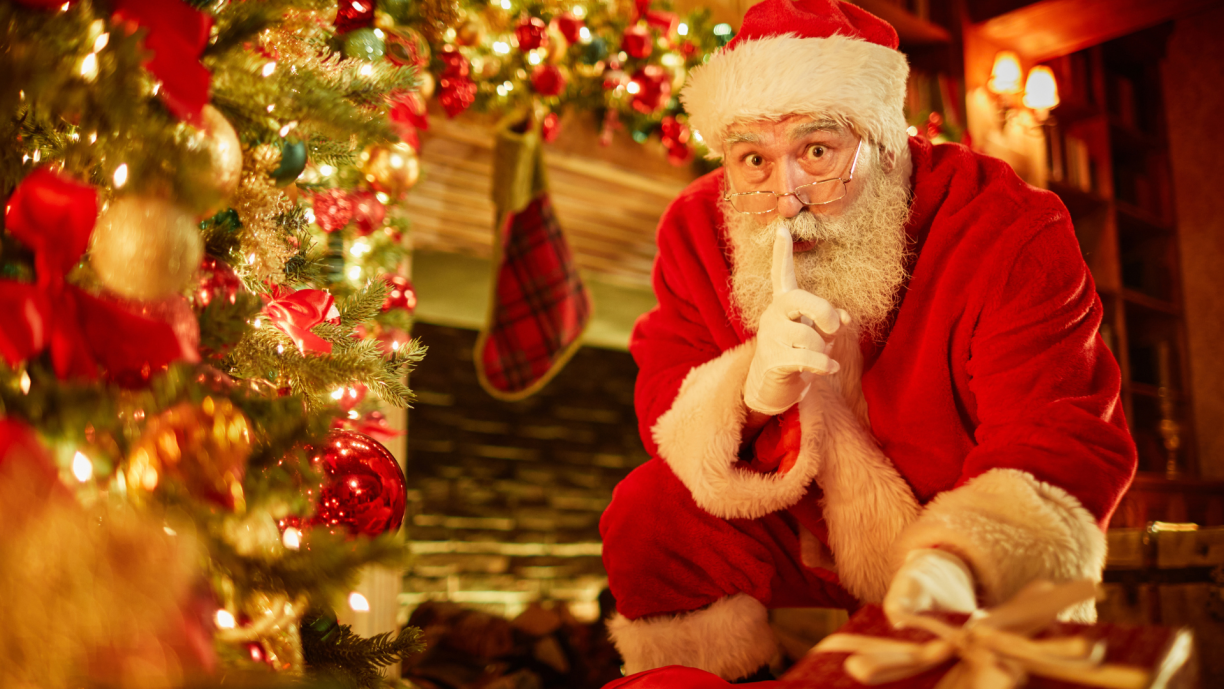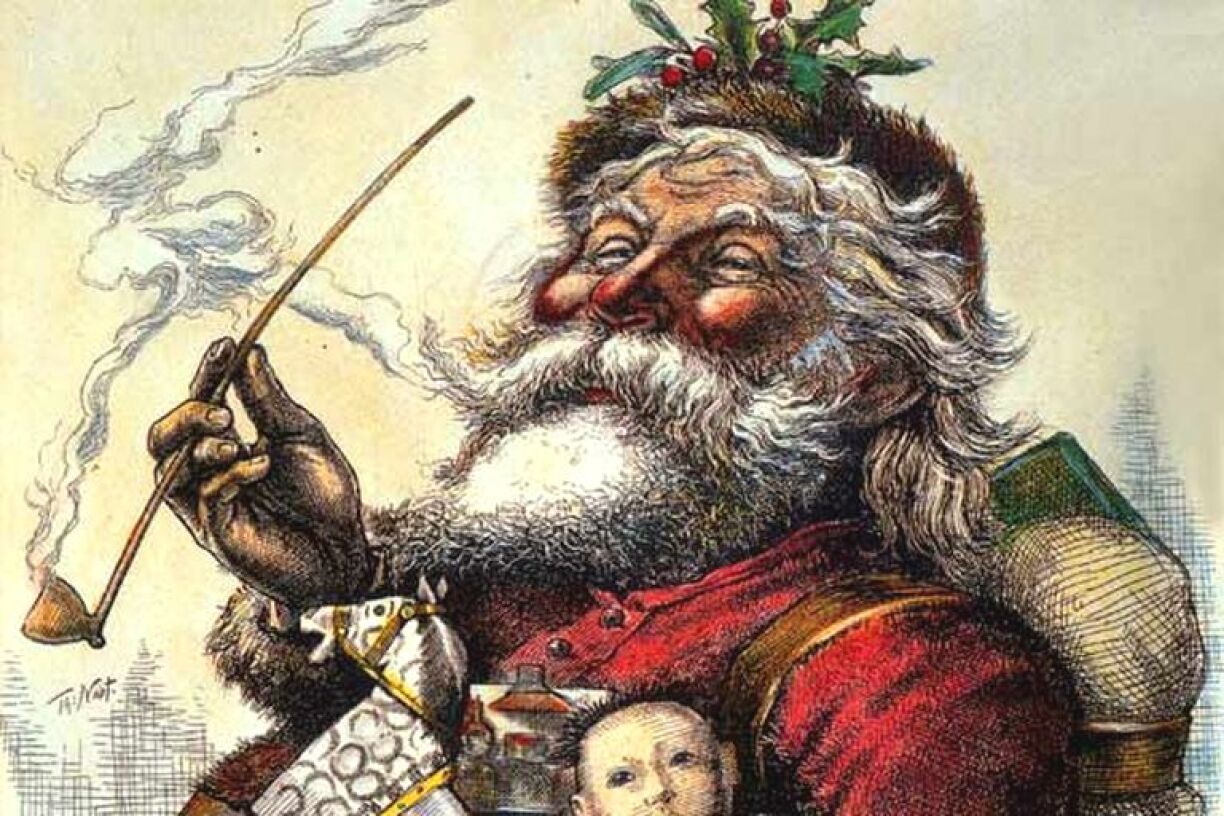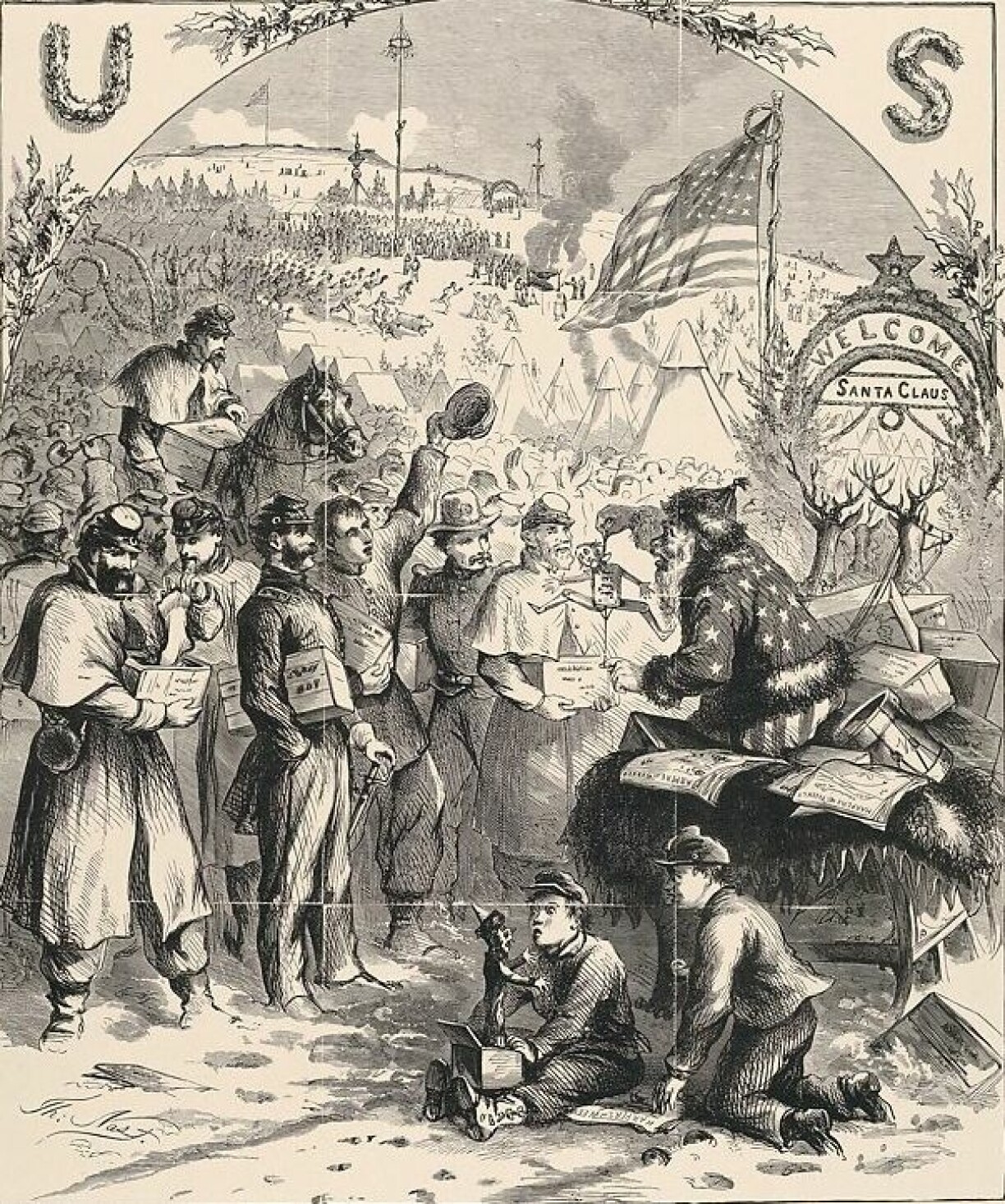
The festive season is upon us, Christmas markets have arrived and across Luxembourg children have been anticipating a visit from Kleeschen. Today is a traditional holiday for children in Luxembourg’s basic schools to celebrate ‘Kleesechersdag’. Many countries celebrate Feast Day of St Nicholas or St Nicholas Day including Luxembourg, Belgium, the Netherlands, and in parts of France and Germany amongst others.
Your family might refer to Father Christmas, Père Noel, Papa Noel, Santa Claus, Kris Kringle, Sinterklass, Saint Nick, Belsnickel, Olentezero, Mikulas, Christkind, Joulupukki, Ded Moroz, La Befana, Yule Lads, Agios Vassilis, Tomte or perhaps even counterparts such as Krampus, the horned anthropomorphic figure in Central and Eastern Alpine folkloric tradition. Similar to Houseker in that he is the menacing sidekick who accompanies St Nicholas on the eve of 5 December. Scary.
Living in Luxembourg, you probably include Kleeschen in your family traditions. While the kids are very young, ask fewer questions and are happy just to receive a gift with little interest in the historical background of the gift givers, it can be more straight forward. This is something Nisha and her husband have found while living in Luxembourg for four years. They celebrate Kleeschen and Santa without confusion or the need for explanation as their boys are still so young, their second son was born here.
With almost 50 per cent expat resident population and growing multi-culturalism, traditions are changing and merging so it can be hard to pinpoint what a truly Luxembourgish Christmas looks like. Customs vary home to home although the prominent and key figure Luxembourgers celebrate is Kleeschen, cherished and eagerly anticipated by children.
Letitia moved to Steinsel from London three years ago with her family. With a Spanish husband, her family celebrate the Three Kings gift giving tradition as well as celebrating Kleeschen and Santa. Another family living in Strassen with American/Luxembourgish nationalities in the household celebrate Kleeschen and Santa as the same figure; he makes a cameo appearance on 6 December with sweet treats, returning for the main event with gifts on Christmas eve.
Kleeschen versus Santa Claus
So, is Kleeschen the same as Santa? Both relate to St Nicholas, have a white beard, wear red and come bearing gifts so it is understandable when kids get confused. Their sidekicks give off a different vibe however; a menacing figure in a dark hooded cape branding some sticks versus some elves and eight friendly reindeer.
Kleeschen is originally based on St Nicholas of Myra and is typically depicted wearing red bishop’s robes, a mitre and red gown while carrying a crosier. He visits children, with his sidekick, Houseker, on the eve of 5 December following an exciting build up during the preceding weeks. Children leave shoes at the door overnight in the hope Kleeschen will fill them with treats and gifts and not sticks of wood from Houseker.
Many Kleeschen events are held all over Luxembourg during the run up when children can meet Kleeschen and receive a bag of treats called a “Titchen’. It is customary for the children to sing Léiwe Kleeschen, Gudde Kleeschen’. He also visits schools, accompanied as ever by Houseker.
In modern times, the American Santa Claus is also based on early representations of a Christian gift giver, largely St Nicholas of Myra merged with the English character Father Christmas, who originally wore green robes. Modern literature has led to the portly and jolly man in a red and white suit we think of today and who we associate with the North Pole, Mrs Claus, elves and reindeer and who visits the eve of 24 December bearing gifts for children. As a result various Christian denominations have differing opinions of Santa Claus, ranging from acceptance to denouncement.

St Nicholas of Myra, Patron Saint of Children
St Nicholas was a 4th Century Christian Saint thought to have been born sometime around A.D. 280 in Patara, near Myra in modern-day Turkey. As Patron Saint of Children, he was known for secretly giving gifts to children during his lifetime and gifts were presented as offerings when he died on 6 December 343. Gift giving on this date remains customary today for children in his honour.
Kleeschen Tradition
Tradition dictates that children leave their shoes/slippers at the door every night from 20 November culminating in Kleeschen’s main visit on the eve of 5 December. Children who have been well behaved may find a treat in their shoes each morning during the lead up. Bad luck for those who find sticks from Kleeschens sidekick, Houseker… A useful way of encouraging good behaviour, perhaps.
Many wait and put shoes out only on the eve of the 5 December. Cue upset from children who discover their peers are waking up each morning to a treat in their shoes. Emmanuelle moved to Luxembourg from the UK six years ago and lives in Munsbach with her family. She spoke of kids at her local school who were upset Kleeschen had not visited after hearing friends tales of waking up to chocolate every morning. A downside when families are embracing traditions with slight differences.
So, who is Kleeschen’s menacing sidekick? Legend has it that a family on their way to the market became separated. The three boys wandered helplessly until they met a seemingly nice man, a butcher by trade, who lured the children back to his shop with a plan to kill them and turn them into sausages.
As if by miracle, St Nicholas heard the children cry, came to their rescue and freed them. As eternal punishment for the butcher, St Nicholas condemned him to be his servant. In Luxembourg he is named ‘Houséker’ which originates from the time of the Peasants War in 1798 when the peasants had their headquarters in Housen. Houseker represents a man from Housen who supported the peasants in the war and is dressed in typical peasants clothes.
Sinterklass
Kleeschen is known as ‘Sinterklaas’ in the Netherlands where he is accompanied by Zwarte Piet (Black Pete), the equivalent to Luxembourgs Houseker. It is said that the Dutch are credited with transporting the legend of Sinterklass (hence the English name Santa Claus) to New Amsterdam, now known as New York City in the 17th Century. This included the custom of gift giving on Feast Day, 6 December. Over the years, Sinterklaas became more secularised in New York and the narrative of Santa Claus began to take form.
A satirical book published in the 19th Century ‘The History of New York’ written by Washington Irving included early Dutch history of Manhatten. Irving was not Dutch but poked fun at Dutch Sinterklass by adding elements from his imagination that were not true, such as a flying sleigh and an overweight Santa. From there, writers and poets added other characteristics like the reindeers, the elves and the North Pole. This book is also reported to be the first to mention Santa coming down the chimney!
Early development of Santa Claus’ image
Most people are familiar with the poem ‘T’was the Night before Christmas’, first published in 1823. Lesser well known is “Old Santeclaus with Much Delight” an illustrated poem published anonymously two years prior in 1821 in New York. It is said to be the earliest published artistic depictions of Santa Claus and of him wearing red but notably not in the style of a Bishop’s garb. It is also said to be the first to illustrate reindeer and a sleigh, plus the first to mention Santa visiting on Christmas eve rather than traditional Feast Day of 6 December.
On 23rd December 1823, ‘The New York Daily Sentinel’, one of the first ever daily newspapers in the United States, published ‘Twas the Night Before Christmas’. St Nicholas is described as a portly man; “chubby and plump” with “a little round belly that shook when he laughed like a bowlful of jelly”. Somewhat concerning given the featured “miniature sleigh” and “tiny reindeer” but who wants to spoil a charming story.
Santa’s reindeer are named in the poem for the first time; Dasher, Dancer, Prancer, Vixen, Comet, Cupid, Dunder and Blixem who guide his gift laden sleigh through the star-lit sky. The latter two reindeer are now known as Donner and Blitzen, changed from the old Dutch words for thunder and lightning to more German sounding words. There has been controversy over claims to authorship although Clement Clarke Moore is widely credited. Some claim the true author to be Henry Livingston Jr and that Moore took credit nine years after Livingston’s death in 1828.
Illustrations of Santa Claus
German-American illustrator, Thomas Nast, is legendary for his political cartoons and is also said to be responsible for the jolly St. Nick image we know today. He is also said to be the creator of the story that Santa lives at the North Pole. Nast first drew ‘Santa’ combining the tradition of Saint Nicholas with other German folk traditions of elves to draw his Santa in 1862.

The Coca-Cola Company creating the legend of Santa Claus is a widespread urban myth thanks to a highly successful marketing campaign during the 1930’s. Illustrator Haddon Sundblom depicted Santa wearing a red and white suit which aligned with The Coca-Cola company colours, however Santa had been illustrated wearing red and white long before then. Coca Cola did play a role in shaping the jolly character we know today, however.
Another of Nast’s illustrations of Santa appeared on the cover of Harpers Weekly, a publication widely acknowledged as being in support of the Union during the American Civil War. Featured on the front page of the January 3, 1863 edition, the illustration was largely propagandistic. Santa is seen wearing a jacket patterned with stars and trousers coloured in stripes, a nod to Santas allegiance. He is holding a puppet toy with a rope round its neck and JEFF emblazened on its front, representing the Confederate President, Jefferson Davis. Santa is sitting on his reindeer-pulled sleigh, distributing gifts to Union troops.

Mrs Claus or the idea of a wife for Santa may have been introduced for the first time in the mid-19th century reportedly in the 1849 short story “A Christmas Legend” by missionary James Rees.
Christmas Eve
In Luxembourg, traditionally presents on Christmas Eve are not brought by Kleeschen or Santa Claus but by Christkind (baby Jesus), who will leave clothes and books under the Christmas tree during the night.
Customs vary from home to home and many families celebrate Santa on Christmas Eve. He is expected to come down the chimney to leave gifts for children while they sleep. In the absence of a chimney, he fortunately has a key that can open any door in the world. It was traditional for children to leave a glass of milk and a plate of cookies for Santa. In countries such as the UK, Australia and New Zealand often sherry or beer and mince pies were left. Over time these traditions have merged, evolved and often now include items such as a carrot for Rudolph!
Old Santeclaus with much delight
His reindeer drives this frosty night,
O’r chimney tops, and tracts of snow,
To bring his yearly gifts to you.
The steady friend of virtuous youth,
The friend of duty, and of truth,
Each Christmas eve he joys to come
Where peace and love have made their home.
Through many houses he has been,
And various beds and stockings seen;
Some, white as snow, and neatly mended,
Others, that seemed for pigs intended.
To some I gave a pretty doll,
To some a peg-top, or a ball;
No crackers, cannons, squibs, or rockets,
To blow their eyes up, or their pockets.
Where e’re I found good girls or boys,
That hated quarrels, strife and noise,
I left an apple, or a tart,
Or wooden gun, or painted cart;
No drums to stun their Mother’s ear,
Nor swords to make their sisters fear;
But pretty books to store their mind
With knowledge of each various kind.
But where I found the children naughty,
In manners crude, in temper haughty,
Thankless to parents, liars, swearers,
Boxers, or cheats, or base tale-bearers,
I left a long, black, birchen rod,
Such as the dread command of God
Directs a Parent’s hand to use
When virtue’s path his sons refuse.